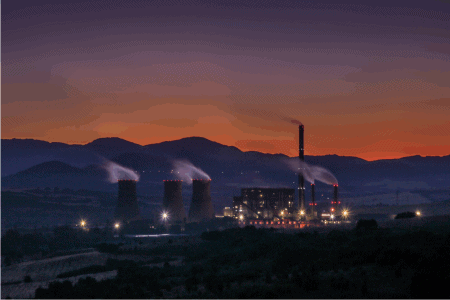Duke Energy Adds EMP Threats To Its Emergency Planning

Peter Behr, E&E News reporter
Published: Monday, June 5, 2017
Duke Energy Corp. is linking three of its electric power generating stations in the Carolinas — nuclear, coal and hydropower — closer together to test its ability to recover from a devastating natural disaster, solar flare, atmospheric electromagnetic pulse (EMP) or cyberattack.
One goal of what is called the Lake Wylie Pilot Study is to ensure continued operation of Duke Energy’s Lake Wylie hydropower facility and transmission connections to the Catawba nuclear power plant, said Henry Cooper, a former senior U.S. missile defense programs and arms control official who launched the study.
Cooper testified May 4 at a Senate Energy and Natural Resources Committee hearing about the project, saying its goal is to “build an island around nuclear plants, its hydroelectric plant, a coal plant, all on that lake,” so that the area retains electric power if an EMP attack shut down the energy supply from outside the area.
Cooper is a leader in a campaign by some members of Congress and former defense officials to harden the U.S. power grid against a potential EMP attack by North Korea, Iran or terrorist groups. The explosion of a nuclear warhead in the atmosphere above North America would unleash powerful bursts of energy that could damage or destroy electronics in control systems that run grid and pipeline operations and set loose damaging rogue currents in transmission grids, experts agree. The industry is still studying likely impacts on particular grid equipment.
Electricity from the Lake Wylie 60-watt hydro unit could keep the Catawba nuclear reactors’ cooling water pumps operating and prevent a reactor meltdown if outside power was lost and the reactors’ backup diesel generators could not operate, Cooper said.
Such a “station blackout” was the scenario in the 2011 Fukushima Daiichi nuclear crisis. In response, the Nuclear Regulatory Commission expanded requirements on plant operators to maintain reactor cooling capabilities during emergencies, though industry critics challenge whether the NRC rules do enough.
The plan would also aim to bring the Allen coal plant on Lake Wylie in Gaston County, N.C., quickly back online to help begin restoration of grid operations in its region if power were knocked out, Cooper said.
Duke’s operators are tightening emergency coordination plans with law enforcement, local officials and the National Guard to create a more comprehensive threat response, said Sam Holeman, Duke vice president for transmission system planning and operations.
Holeman said the Lake Wylie study illustrates the utility’s decision to plan for both defense and recovery from low-probability but potentially devastating attacks that may break through, including a doomsday EMP explosion. A resilience strategy means “being able to take that punch, get up and continue to fight,” Holeman said. “We harden where we can, but being able to take that punch is what we’re striving for.”
Bottoms up
Grid resilience has also become a watchword for the Department of Energy under Secretary Rick Perry. In April, Perry directed Chief of Staff Brian McCormack to conduct a high-profile study of threats and challenges to the power grid, including whether coal power plant operators are “adequately compensated” for their on-site fuel supplies (Greenwire, April 19).
Cooper, the arms control expert, told senators that he began working on the EMP issue at a local level after giving up hope that the federal government and regulators would settle on a national policy. “Frankly, I have become so concerned about the dysfunctionality of the federal government in dealing with the threat that I am now spending whatever remaining time the good Lord gives me to work with local and state authorities and private citizens,” he said.
In South Carolina, he began by enlisting professors from his alma mater, Clemson University. “I developed an excellent relationship with a key professor and several Duke engineers who also are concerned about this threat, and we agreed on how we could proceed with a meaningful ‘bottoms-up’ program,” Cooper said. Duke Energy then joined the effort.
Holeman said that Cooper, whom he called a “thought leader” on the EMP threat, advocated for expanding emergency response planning in extreme emergencies. “He talked about the broader perspectives of the consequences [and] brought in water and sewer [utilities], local health services, law enforcement.”
At the Senate hearing where Cooper spoke, a senior industry researcher defended the fact-finding around EMP threats and responses that he said must precede regulations ordering specific defenses.
“We lack sufficient information to understand exactly what the probability is and what the severity is of attacks like EMP,” said Rob Manning, vice president of transmission and distribution for the Electric Power Research Institute. “That information is becoming clear, and we’re beginning to understand that. And once we have adequate information about EMP, then we can balance that sufficiently, I believe, with threats like cybersecurity where we have a quite a bit of information.”
The goal, he noted, is to develop cost-effective mitigation tools so utilities can recover quickly from an event.
In February, EPRI issued the first report from a three-year study of the EMP threat. This summer it will release findings on how U.S. military standards for EMP defense could be adapted for the utility industry (Energywire, Feb. 20).
Applying the military requirements across the board with the U.S. power sector would be “prohibitively expensive. It’s very difficult, it’s very challenging,” Manning said. So utilities may choose to meet military standards at the most critical facilities. “But it won’t be practical to support the whole system until we develop some more effective and lower-cost alternative,” he added.
For now, the outlook on grid sector preparation for EMP attacks will be largely “bottoms-up” actions by some individual utilities, officials said. Duke’s findings won’t be made public but will be shared within the industry, Cooper said.
